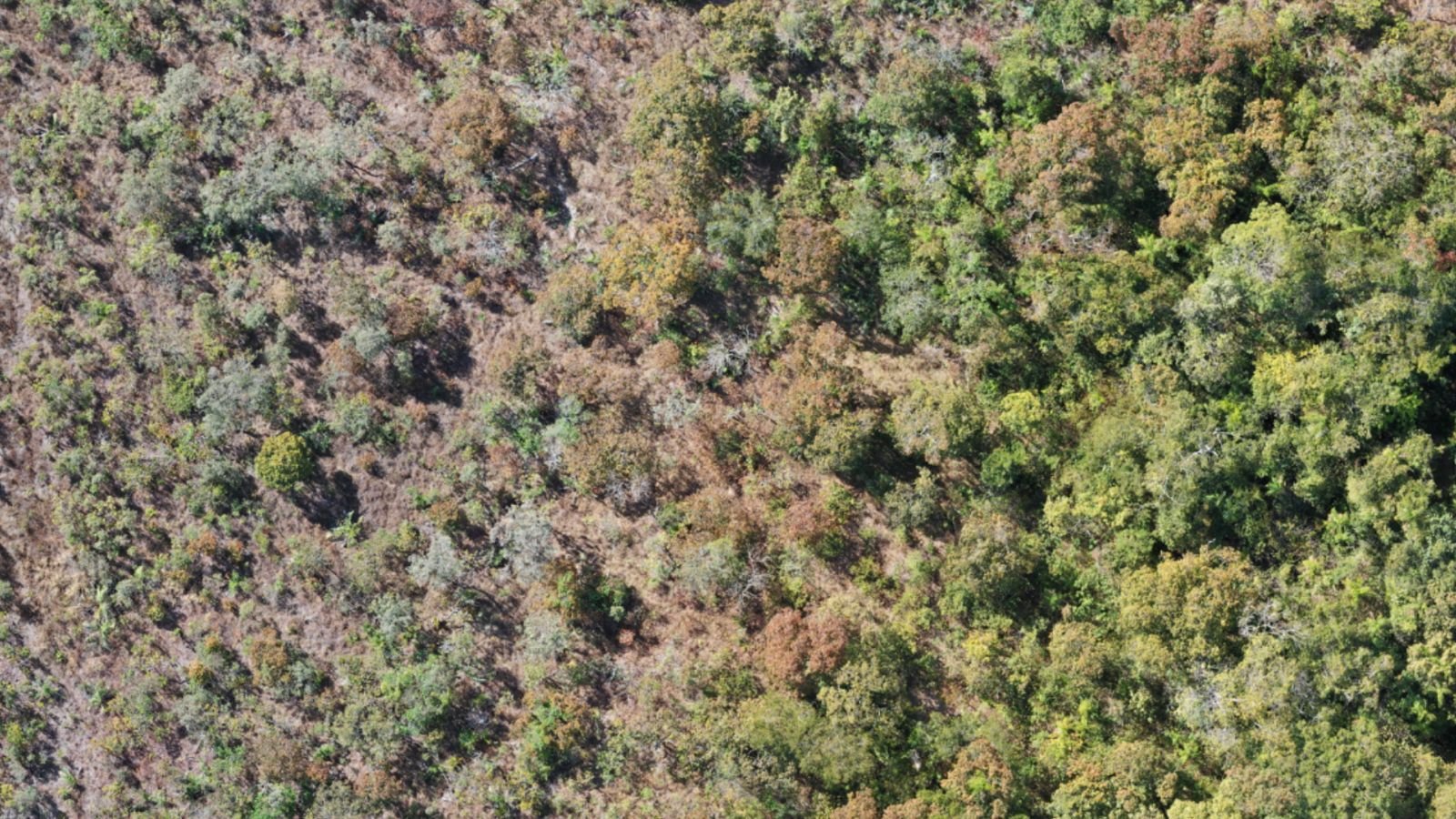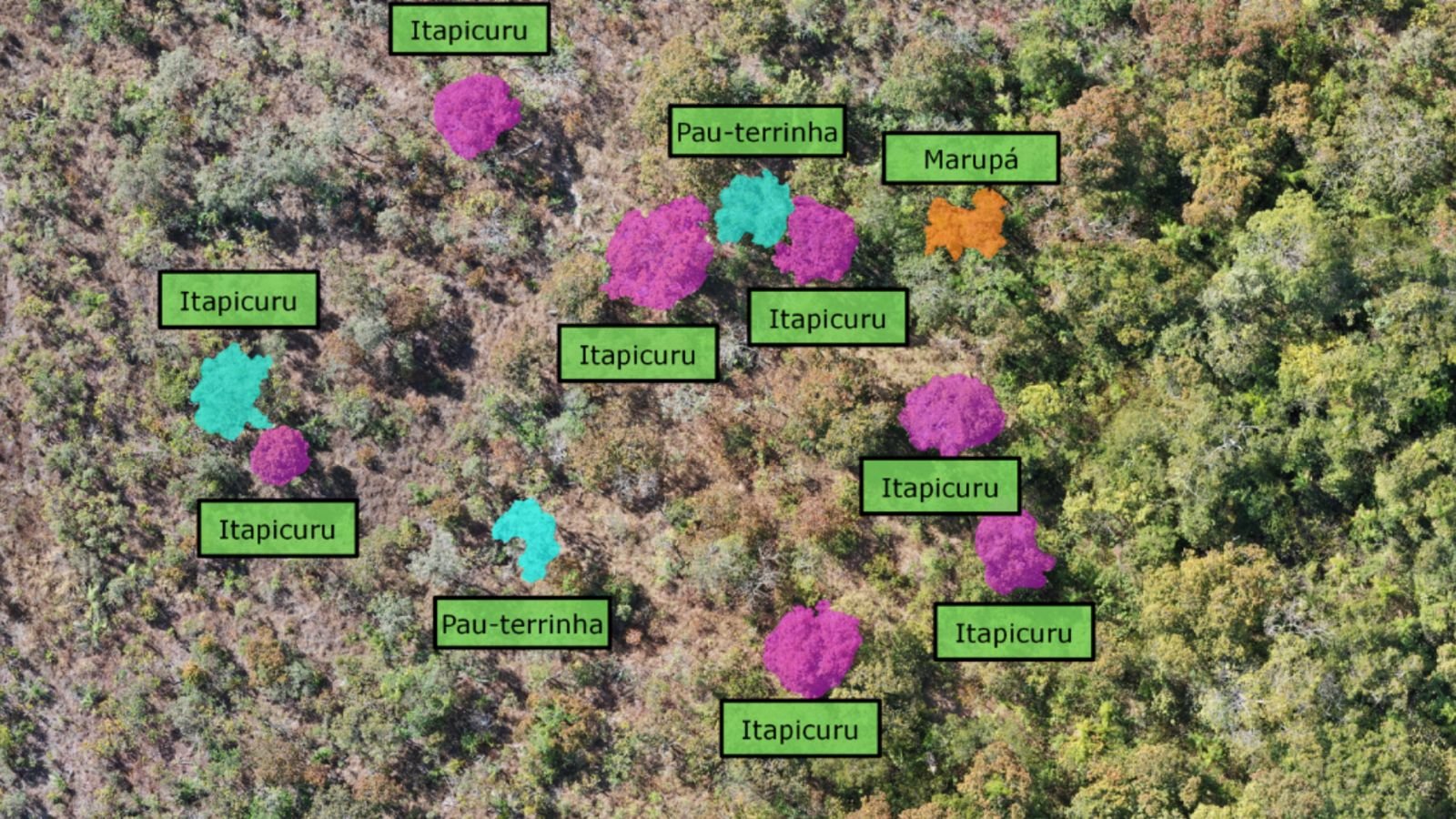Florest stewards
With machine-learning technology for botanical identification, Bioflore is developing a remote sensing and monitoring platform to cover large forest areas
An aerial photo of the treetops in a Cerrado area can reveal treasures hidden beneath the foliage: the enormous floristic diversity and carbon stock potential preserved in one of the world's most threatened biomes. This is the vision of Bioflore, a startup in the Sustainable Soy for the Cerrado Program portfolio, organized by the AgTech Garage innovation hub and the Land Innovation Fund, with strategic support from Cargill, CPQD, Embrapa and Embrapii, to promote novel solutions for environmental conservation.
With financial support from the Startup Finance Facility, the company is developing a digital platform to catalog tree species with data collected by drones equipped with high-precision sensors and cameras. The information is run through an algorithm originally designed for facial recognition and then adapted to identify and recognize forest species. The survey will become part of a botanical diversity library – the FloreViewer platform – capable of generating a portrait of the biodiversity contained in conserved areas of farms throughout the country.
The data is gathered during overflight surveys by drones at different scales and altitudes, capable of gathering information both on the landscape context and on details useful for species identification, along with data collected on site by the Bioflore team to validate the research baseline. The challenge is to further enhance the algorithm with high-resolution images to identify individual treetops.
Bioflore uses the survey to identify species on a farm and its areas with the greatest botanical diversity, as a direct contribution to managing and enhancing its environmental assets. The outcome will be cutting-edge detection models to automatically map key Cerrado species in the Matopiba region.
"We believe it is possible to assign economic value to a forest with an efficient, reliable and scalable way to measure the ecosystem services it provides," says Heitor Filpi, the startup's CEO and co-founder. "Our focus is on identifying non-timber forest resources with economic value for the farm and the community."
A proposta da Bioflore é conjugar conhecimento científico com tecnologia de ponta para identificação da biodiversidade em escala de paisagem, tornando economicamente viável o mapeamento e a detecção das espécies contidas em propriedades rurais do país. “É muito importante o produtor rural entender quantas e quais espécies existem na fazenda. Só assim conseguiremos calcular e valorizar os ativos ambientais, contribuindo para a conservação da mata em pé”, explica Heitor.
Bioflore is one of 28 startups in the portfolio of the Sustainable Soy for the Cerrado Program. "The Bioflore project reaffirms the Fund's commitment to enabling innovative solutions to meet global agricultural, climate and environmental demands," says the Fund's director, Ashley Valle. "The Land Innovation Fund's contribution puts academic research closer to innovation ecosystems, generating cutting-edge solutions for whole farms, from the crop fields to conserved areas, to stimulate sustainable agricultural development," she adds.
Pilot Project:
Its participation in the Sustainable Soy for the Cerrado Program (PSSC) allowed Bioflore to implement a pilot project on the Riachão Farm in Balsas, Maranhão, to develop a botanical inventory model that can be replicated on other farms in the region. Owned by a member of the For Farmers Program, around 60% of the farm's 6,000-plus hectares is crop land, with the rest occupied by different types of native vegetation – flooded forest, savannah grassland and riparian woodland.
"The structure of the tree canopy changes from one region to another, as does the color and shape of the foliage and the frequency of each species. That's why we build libraries based on the species identified on certain farms, which feed the regional models to be applied on other farms in the same region," explains Heitor.
For this pilot project, a team from BrCarbon, another of the project's startup partners involved in the PSSC, provided forest inventory data to calculate biomass, raw RGB images and Lidar data collected in the field in December 2022. In July 2023, a Bioflore team returned to the farm to collect very high resolution RGB images, identify the native species in the region and georeference individuals from each species in the field.
At the Riachão farm, the Bioflore team identified eight palm species and 82 shrub species, some of which are threatened with extinction – such as the Attalea barreirensis palm, known as ‘catolé’, and the Caryocar coriaceum tree, popularly known as the ‘thornless pequi’. The survey also revealed the presence of several native species with high economic potential, such as moriche palms, babassu palms, cashew trees and courbarils.
Bioflore is now working with more than 26,000 images, 326 location files, documents and spreadsheets totaling more than 394 GB of information. The data will be used to enhance the FloreViewer platform's artificial intelligence algorithms, allowing it to be applied at different times of the year and on different farms in the same region of Maranhão's Cerrado.
Success Story:
Founded in 2019, Bioflore combines research and advanced technology to automate the monitoring of changes in vegetation, carbon stocks and biodiversity. Its technological solutions cut costs for carbon and biodiversity projects, as a way to scale up environmental conservation initiatives nationwide.
Two of Bioflore's employees are part of the only Brazilian team shortlisted for the XPRIZE Rainforest, a worldwide competition to reward the most innovative solutions for mapping biodiversity in tropical forests. The technology they showcased in the competition is the same one used to detect biodiversity in the Cerrado.
In addition to participating in the Sustainable Soy for the Cerrado Program and receiving financial support from the Startup Finance Facility, Bioflore won the Brazilian phase of Climate Launchpad 2021 and was highlighted at Conexões Onda Verde 2022, an initiative supported by the Land Innovation Fund, both of which are organized by Climate Ventures.
The company also has projects with two other members of the PSSC portfolio. With BrCarbon, it set up a platform to centralize the collection and analysis of social data in carbon projects, which it now intends to expand into a complete management system. With LandPrint, it is developing models to automate the monitoring of carbon and botanical diversity on farms in the Chapadinha and Brejo regions of Maranhão.
"Here at Bioflore, we work non-stop to show the value of native vegetation and turn it into an asset that needs care and deserves appreciation. With advances in technology, we will gain recognition for the value of biodiversity on more farms all over the country," concludes Heitor.



